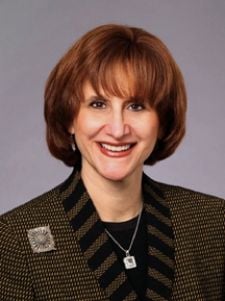
Rebecca S. Twersky, M.D., M.P.H., is the vice-chair for Research and professor of Clinical Anesthesiology at SUNY Downstate Medical Center at Brooklyn. She practices clinical anesthesia at Long Island College Hospital, where she has served as the medical director of the Ambulatory Surgery.
Acuity Care Technology (ACT): Are there any new changes to the overall meeting this year?
Dr. Twersky (DT): Yes, the whole format for the meeting has changed. In previous years our program was designed by format, and now it’s designed by scientific content. The contents of the meeting are being planned by eight different subspecialties, or tracks — we have ambulatory experts planning the ambulatory sessions, critical care experts planning the critical care sessions and so forth. The intent is to have strong scientific content that reflects both cutting-edge and general information by clinicians who are specialists in that area.
Also, the program book will be bigger, better and much more user friendly. It is divided by learning tracks. We have also added a “Daily Schedule in Brief,” so you can see everything that is going on each day. The book is also divided by tabs according to track.
ACT: What are some new sessions and workshops we can expect?
DT: We have new lunch panel sessions, point-counterpoint debate sessions and many workshops that we haven’t had before as well.
Simulation EXPO is an interactive learning experience developed by members of ASA’s Workgroup on Simulation, in which they will observe an exercise in real time. It will take place on Saturday, Oct. 14. Dr. Michael Olympio will present an overview of ASA’s initiative to make simulation-based training an effective and accessible learning tool for ASA members. Other members of the workgroup will help guide participants through the interactive session. Attendees will actually observe a simulated case, see the impact of the decisions on the outcome and engage in audience-directed questions.
The Committee on Electronic Media and Information Technology (EMIT) is organizing an interesting session called Medical Device Interoperability for Improving Safety and Efficiency. It’s an opportunity to learn about the trends and innovations in medical device connectivity; knowing how medical device connectivity will interface with operating room activities as well as patient safety. We use a lot of technology in our practice, but how it actually improves patient safety and healthcare is not clear. This session focuses on how to reduce medical errors and healthcare costs, and it will provide examples of new devices as well.
ACT: What is one trend in anesthesiology that you expect to learn the most about this year?
DT: Postoperative cognitive dysfunction is a really hot topic, and it has received quite a bit of attention from both the medical community and the public recently. There is a whole spectrum of degree of postoperative cognitive dysfunction, and much that we still need to discover about it. Might there be a particular anesthetic technique that’s implicated in POCD? Or might it be related to some other aspect of the patient’s condition or surgery? The journal Anesthesiology is sponsoring a symposium on this topic and it will review the literature and research to date about different sides to papers that have been submitted.

